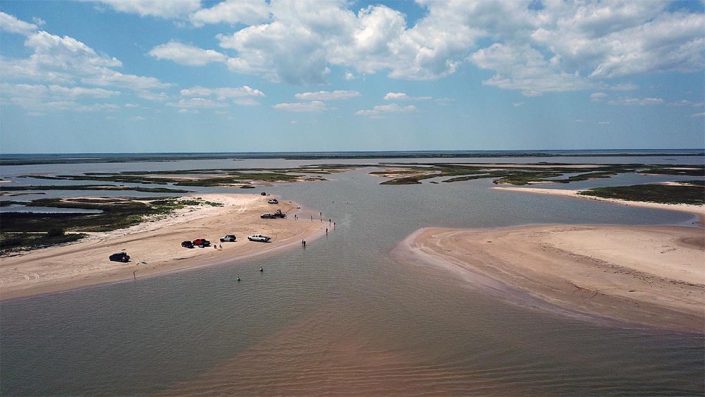How do coastal ecosystems adapt to rising temperatures and sea levels?

(Image: College of Engineering)
A multi-disciplinary team of Texas A&M University faculty-researchers is working to better understand the natural adaptation of coastal ecosystems to environmental stressors like storms, rising temperatures and sea levels.
“The topics include the exchange of sediments between the nearshore environment, the beach and the sand dunes; and the factors limiting the growth of coastal vegetation,” said Orencio Duran-Vinent, research assistant professor, Department of Ocean Engineering, College of Engineering. “We are also looking at what controls the maximum size of coastal dunes; the post-storm recovery of dunes and barrier islands; and the prediction of their medium and long-term changes resulting from the combination of waves, storms, wind-driven transport and sea level rise.
Duran-Vinent is working with Ignacio Rodriguez-Iturbe, Distinguished University Professor and TEES Eminent Professor, and Paul Mario Koola, professor of practice, both in the Department of Ocean Engineering; and Rusty Feagin, professor in the Department of Ecosystem Science and Management, College of Agriculture and Life Sciences.
“The main goal is two-fold,” Duran-Vinent said. “To use this knowledge to devise better ways to protect, restore and increase the resilience of coastal ecosystems, and to develop a new approach in coastal engineering where natural ecosystems are an integral part of the coastal infrastructure.”
These natural ecosystems provide flooding protection, biodiversity, adaptation to external conditions and sustainable development for their communities. For example, coastal dunes are the natural barriers against storm impact for beaches. Their success in coastal protection depends on how tall they are at the moment of impact.
“Coastal dunes arise from the sand trapped by plants after colonizing a bare beach area, and their maximum natural size is controlled by the complex interaction of physical and biological processes near the shore,” Duran-Vinent said.
Recovery of the dune after the storm is controlled by the war between erosive events. For example, the big waves that kill vegetation and destroy developing dunes and restorative events that deposit sediment and increase elevation. This in-turn facilitates plant establishment and wind-driven transport.
By investigating this topic, researchers can design interventions that shift the balance toward constructive restoration processes and make an effective use of the natural dynamics. The team envisions coastal protection plans that involve selective human intervention to amplify the natural protection already provided by the coastal ecosystem.

